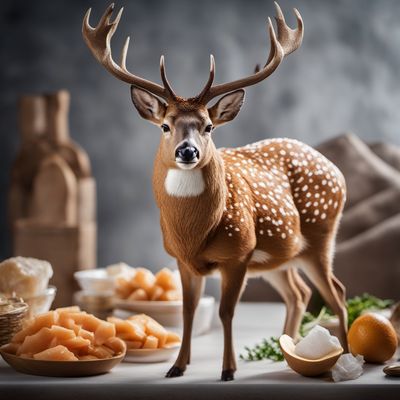
Ingredient
Mammals fat tissue
The Savory Essence
Mammals fat tissue, also known as animal fat, is a versatile ingredient used in various culinary applications. With its rich and savory flavor, it adds depth and richness to dishes, making them more flavorful and satisfying.
Origins and history
The use of animal fat in cooking dates back thousands of years. It has been an essential ingredient in traditional cuisines around the world, providing both flavor and texture to dishes. Today, it is still used in many culinary traditions, although its consumption is more limited due to health concerns.
Nutritional information
Mammals fat tissue is high in calories and saturated fats. It also contains fat-soluble vitamins and provides a concentrated source of energy. However, due to its high saturated fat content, it should be consumed in moderation as part of a balanced diet.
Allergens
Mammals fat tissue may cause allergic reactions in individuals with known allergies to animal products. It is advisable to exercise caution if you have a known allergy.
How to select
When selecting mammals fat tissue, look for cuts that are fresh and free from any signs of spoilage or discoloration. The fat should be firm and creamy white in color. Avoid fat that has a rancid or off-putting odor.
Storage recommendations
To store mammals fat tissue, it should be kept in a cool, dry place away from direct sunlight. It can be refrigerated or frozen to extend its shelf life. It is important to keep it properly sealed to prevent any odors from permeating other foods.
How to produce
Mammals fat tissue is produced through animal husbandry and butchering processes. It is not recommended for amateur production due to the specialized knowledge and equipment required.
Preparation tips
Mammals fat tissue can be used in various cooking techniques, such as frying, roasting, or rendering. It adds flavor and richness to dishes like stews, gravies, or sautés. It can also be used to make traditional dishes like lard or schmaltz.
Substitutions
Mammals fat tissue does not have direct substitutions due to its unique flavor and properties.
Culinary uses
Mammals fat tissue is commonly used in traditional cuisines around the world, including European, Middle Eastern, and Asian cuisines.
More ingredients from this category » Browse all

Rabbit, fresh fat tissue
The Lean Protein with a Delicate Flavor

Sheep fat tissue
The Velvety Indulgence: Sheep Fat Tissue

Hare fresh fat tissue
The Delicate Essence of Hare's Fat Tissue

Wild boar, fresh fat tissue
The Luscious Fat of the Wild: Exploring the Richness of Wild Boar Fat

Bovine and pig, fresh fat tissue
Luscious Fat

Pig fat tissue
The Flavorful Lard

Goat fat tissue
Liquid Gold: Unleashing the Richness of Goat Fat

Marine mammals fat tissue
The Ocean's Nutritional Treasure: Exploring Marine Mammals Fat Tissue

Bovine fat tissue
The Savory Fat Marvel

Camel fat tissue
The Richness of Camel Fat

Equine fat tissue
The Richness of Equine Fat

Deer, fresh fat tissue
The Richness of Nature's Bounty